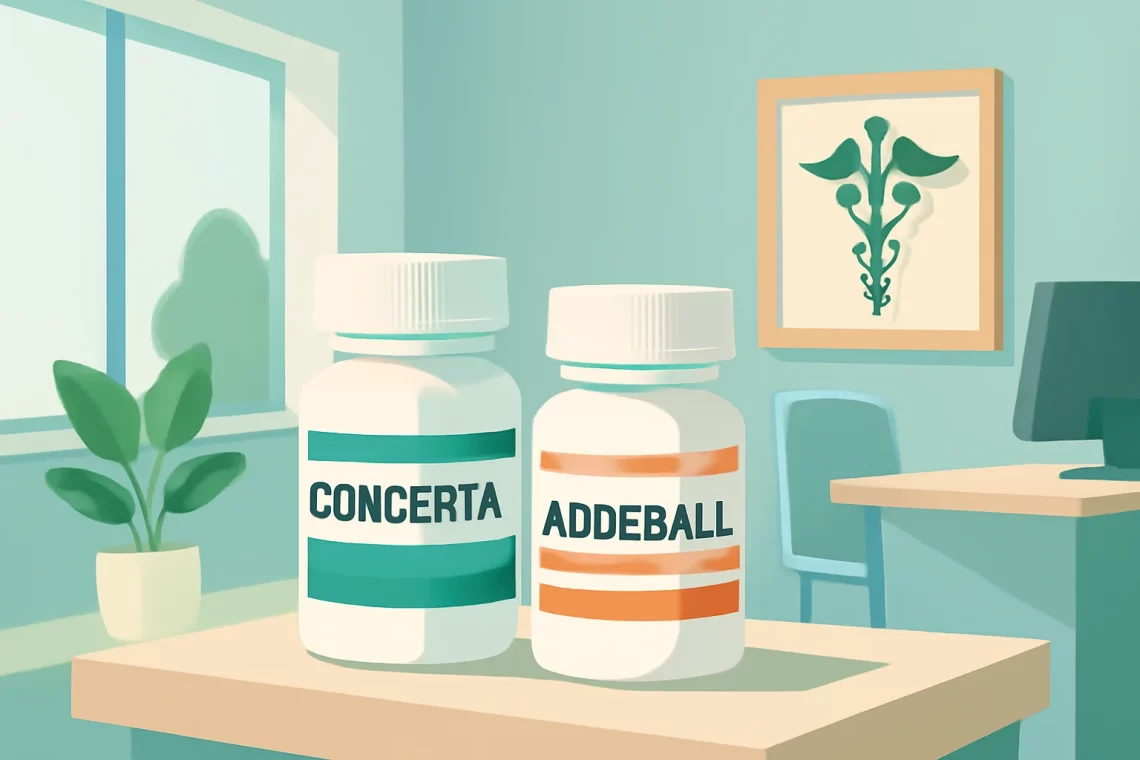
Adderall vs Concerta: Which ADHD Medication is Right for You?
Adderall and Concerta are two well-known medications commonly prescribed for the treatment of Attention Deficit Hyperactivity Disorder (ADHD). Both drugs belong to a category of medications known as stimulants, which work by altering the levels of certain neurotransmitters in the brain to help improve focus, attention, and impulse control. While they share a common goal of managing ADHD symptoms, their chemical compositions, effects, and potential side effects can differ significantly.
Understanding the nuances between Adderall and Concerta can be crucial for patients and caregivers navigating treatment options. The choice between these medications often depends on individual responses, lifestyle considerations, and specific symptoms. As ADHD awareness continues to grow, so does the need for informed discussions about treatment choices. Many individuals seeking help may find themselves at a crossroads when deciding which medication might best support their needs. This article delves into the key differences and similarities between Adderall and Concerta, helping to shed light on their efficacy, usage, and potential drawbacks.
Understanding Adderall
Adderall is a prescription medication that combines two active ingredients: amphetamine and dextroamphetamine. These compounds are classified as central nervous system stimulants and work by increasing the levels of dopamine and norepinephrine in the brain. This increase helps enhance concentration and reduces impulsivity, which are common challenges faced by individuals with ADHD.
Adderall is available in both immediate-release and extended-release formulations. The immediate-release version typically provides relief for about four to six hours, making it suitable for use in specific situations, such as during school hours or work periods. The extended-release formulation, often referred to as Adderall XR, can last up to 12 hours, offering a more sustained effect throughout the day.
One of the significant advantages of Adderall is its rapid onset of action. Many users report feeling the effects within 30 to 60 minutes after taking the medication, allowing for quick relief from ADHD symptoms. However, this quick action can also lead to a higher potential for misuse and dependence, as some individuals may be tempted to take more than prescribed to achieve a more intense effect.
Side effects of Adderall can include insomnia, dry mouth, loss of appetite, and increased heart rate. These side effects can vary from mild to severe, depending on the individual. It’s essential for patients to work closely with their healthcare providers to monitor any adverse reactions and adjust dosages as necessary. Regular follow-ups can help ensure that the medication is effective while minimizing side effects.
Moreover, individuals with certain pre-existing conditions, such as heart problems, anxiety disorders, or a history of substance abuse, may be advised against using Adderall. As with any medication, a thorough discussion with a healthcare provider can help determine if Adderall is the right choice based on medical history and current health status.
Exploring Concerta
Concerta is another popular medication for ADHD treatment, primarily containing methylphenidate as its active ingredient. Similar to Adderall, Concerta functions as a stimulant but works through a different mechanism of action. It primarily affects the reuptake of dopamine and norepinephrine, leading to improved attention and focus in individuals with ADHD.
Concerta is available exclusively in an extended-release formulation, designed for once-daily dosing. This means that patients can take one pill in the morning and receive therapeutic effects throughout the day, typically lasting up to 12 hours. This convenience can be particularly beneficial for students and working professionals who need consistent symptom management without the hassle of multiple doses during the day.
One of the distinguishing features of Concerta is its unique delivery system, known as OROS (osmotic-controlled release oral delivery system). This technology allows for a gradual release of the medication into the bloodstream, providing a smooth and extended effect. Many users appreciate this feature as it often results in fewer peaks and troughs in symptom control compared to immediate-release formulations.
The side effects of Concerta are generally similar to those experienced with Adderall and may include insomnia, decreased appetite, and potential cardiovascular effects. However, some users report fewer side effects overall, leading to a preference for Concerta in certain cases. As with any medication, individual responses can vary widely, highlighting the importance of personalized treatment plans.
Patients considering Concerta should also have a thorough discussion with their healthcare provider, especially if they have pre-existing health conditions or are taking other medications. Monitoring for any adverse effects or interactions is crucial in ensuring the medication is safe and effective for each individual.
Comparative Effectiveness and Side Effects
When comparing Adderall and Concerta, it’s essential to consider their effectiveness and side effects. Both medications have been shown to be effective in managing ADHD symptoms, but individual responses can differ significantly. Some patients may find Adderall to be more effective for their symptoms, while others may respond better to Concerta.
In clinical studies, both medications have demonstrated significant improvements in attention, hyperactivity, and impulsivity. However, some users report that the effects of Adderall can be more pronounced, particularly in the initial stages of treatment. This heightened effect may be beneficial for those who require immediate symptom relief, but it can also lead to a higher incidence of side effects.
Side effects are a critical consideration when choosing between these medications. While both Adderall and Concerta can cause similar side effects, individual tolerance can vary. Some patients may experience more anxiety or jitteriness with Adderall, while others may find that Concerta leads to a more stable mood throughout the day.
The potential for dependence and misuse is another significant factor. Due to its amphetamine composition, Adderall has a higher potential for abuse, especially among individuals with a history of substance use disorders. Concerta, while still a stimulant, may carry a lower risk due to its delivery system, which results in a more gradual release of medication.
Ultimately, the decision between Adderall and Concerta should be made in collaboration with a healthcare provider, who can help weigh the benefits and risks based on individual circumstances. Regular monitoring and open communication about experiences with the medication can significantly enhance treatment outcomes.
In conclusion, both Adderall and Concerta have their unique advantages and limitations. Understanding the differences in their mechanisms, effectiveness, and side effects can empower individuals and caregivers to make informed choices about ADHD treatment.
**Disclaimer:** This article is not intended as medical advice. If you have health concerns or questions regarding medications, it is essential to consult with a healthcare professional.




